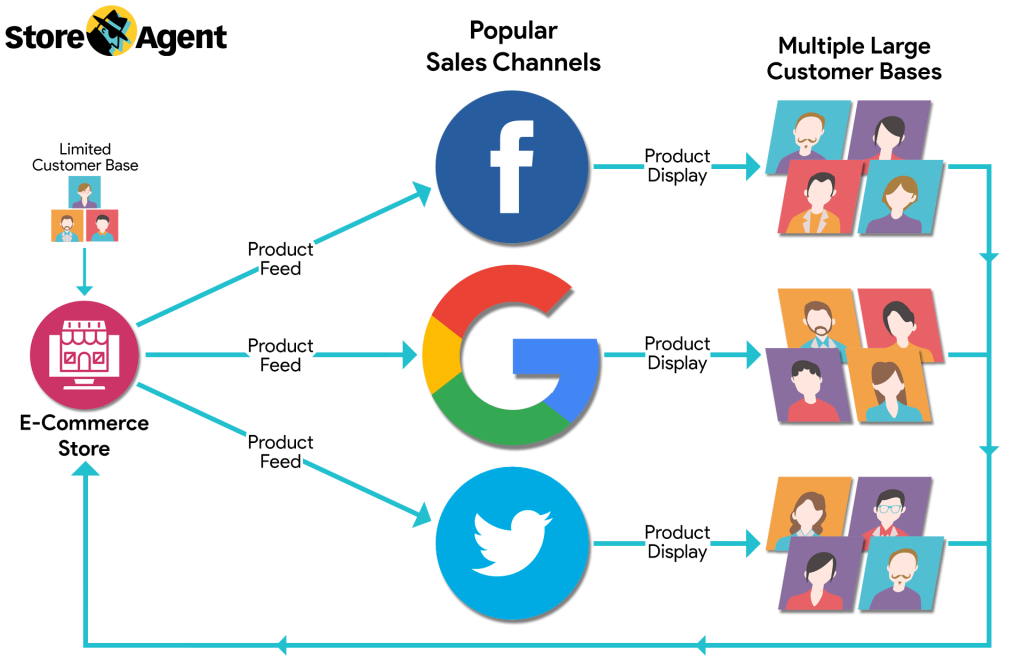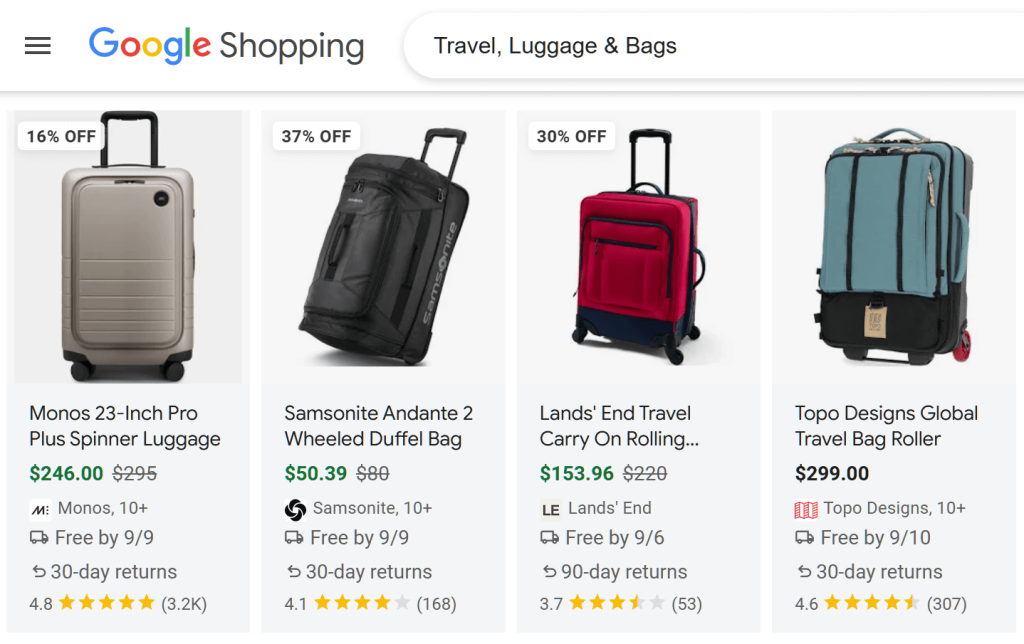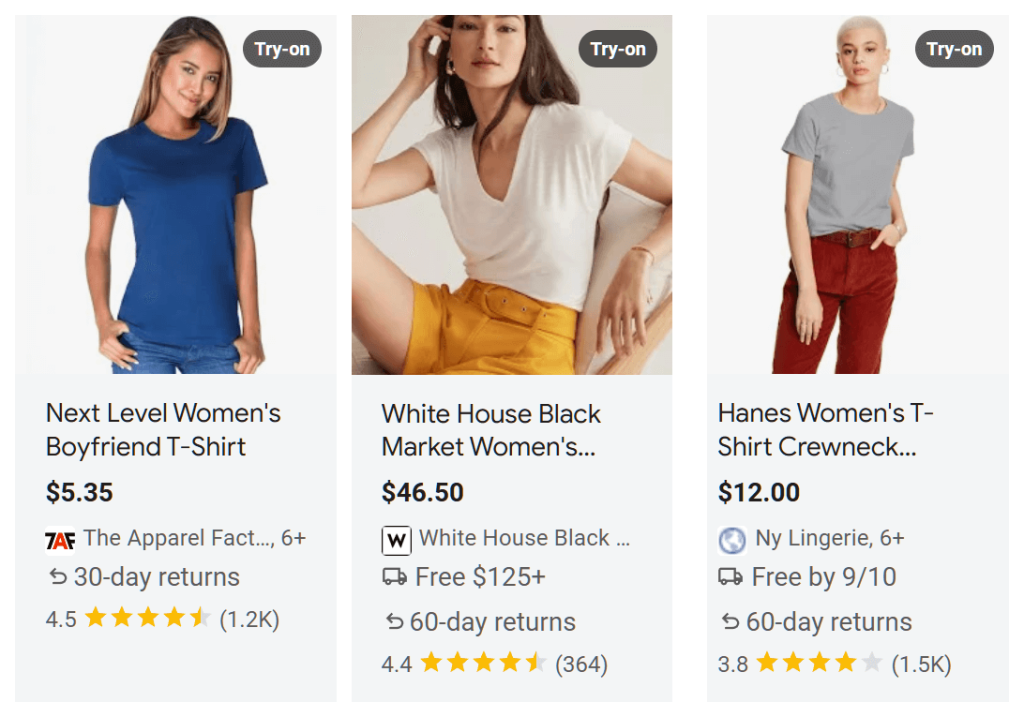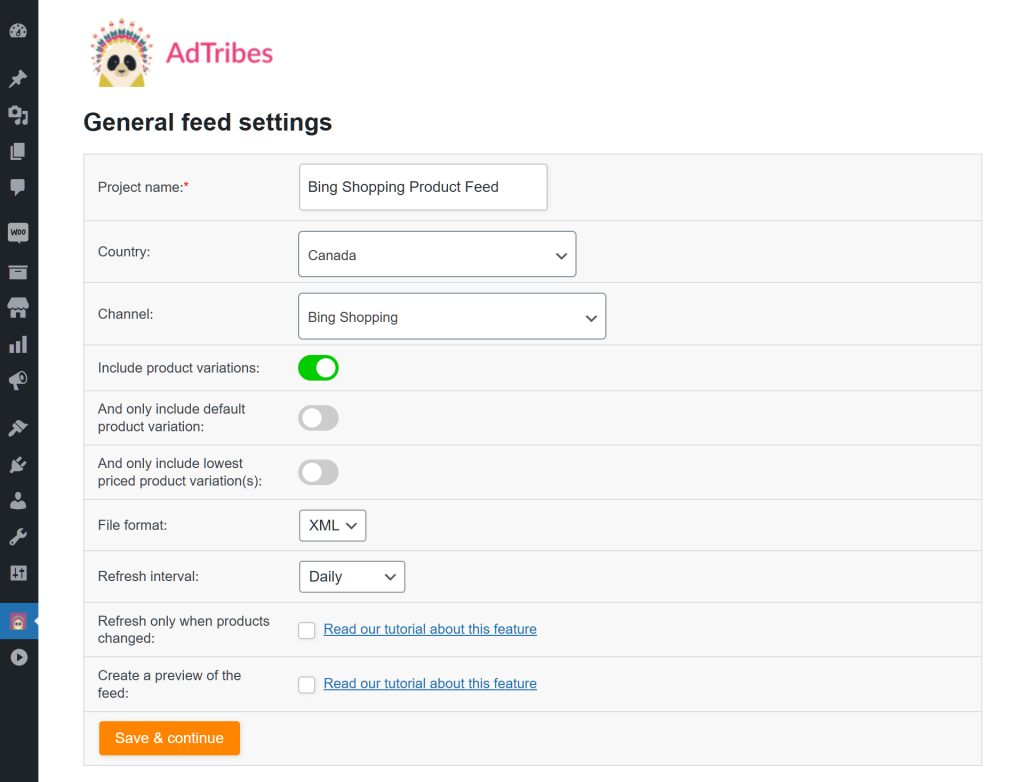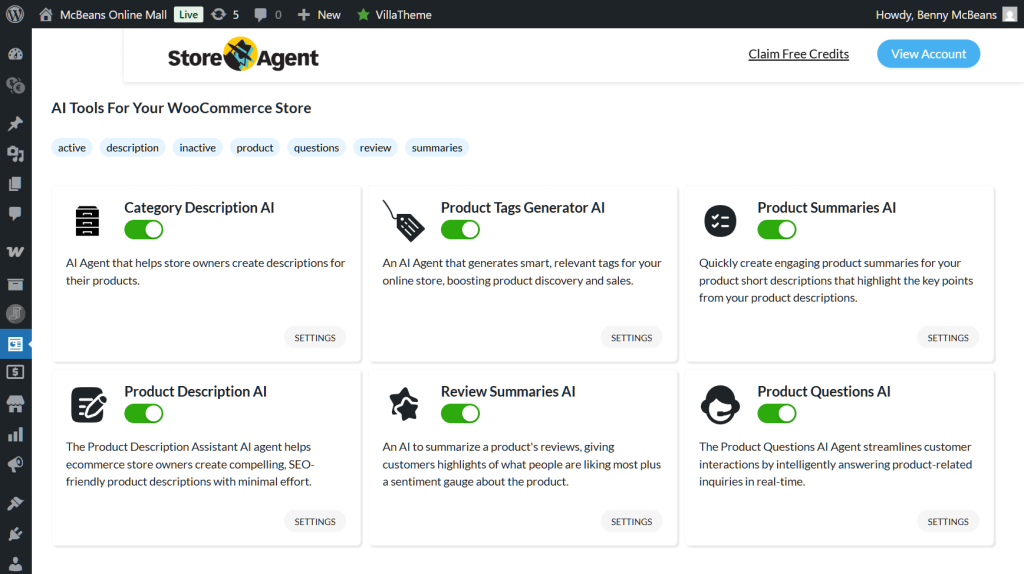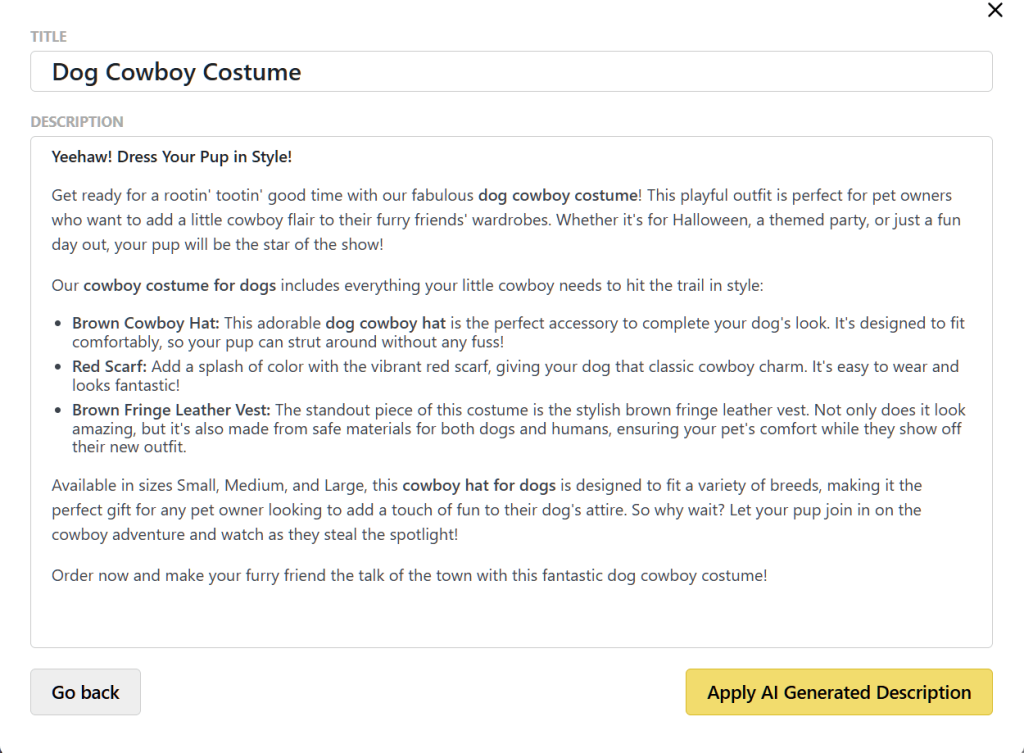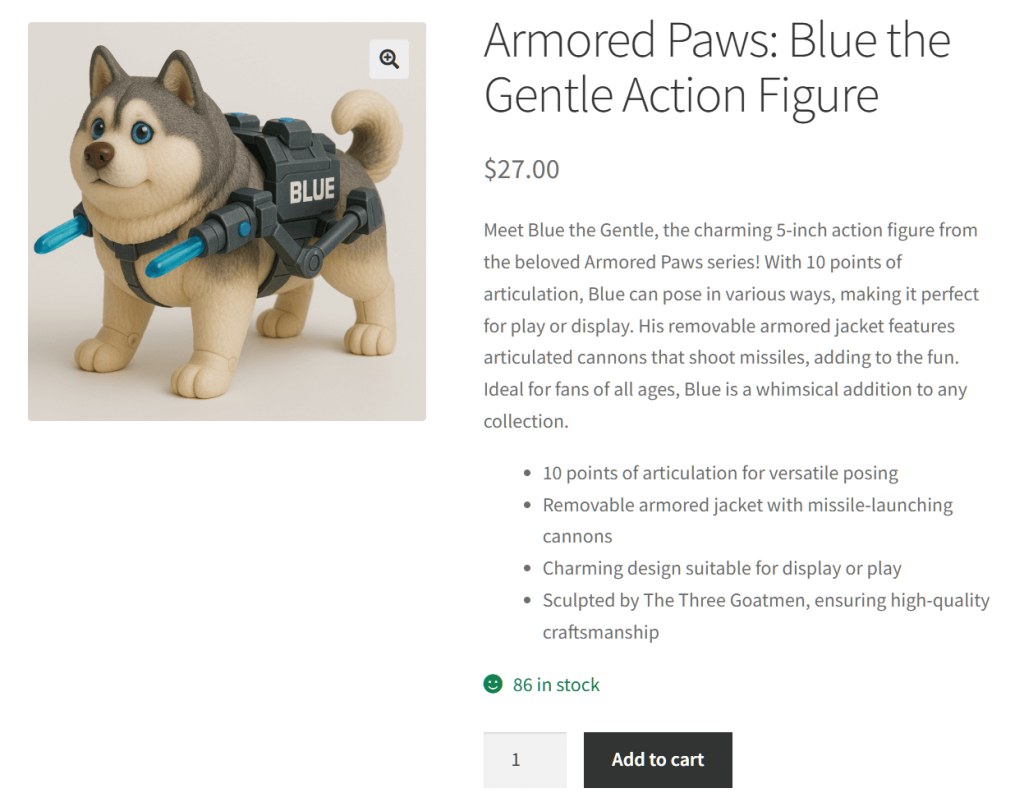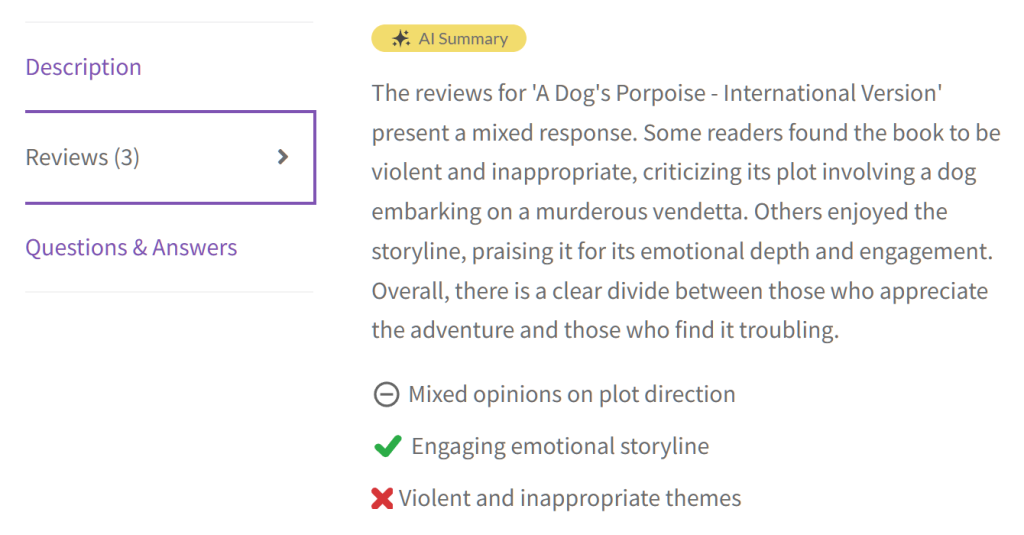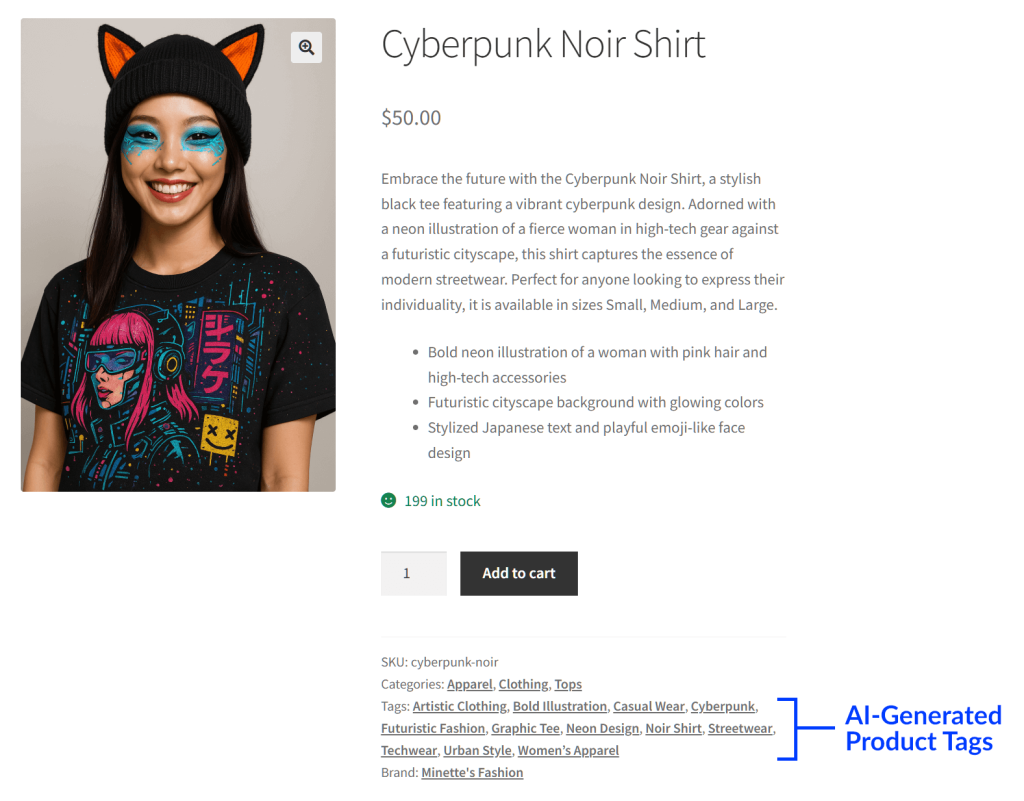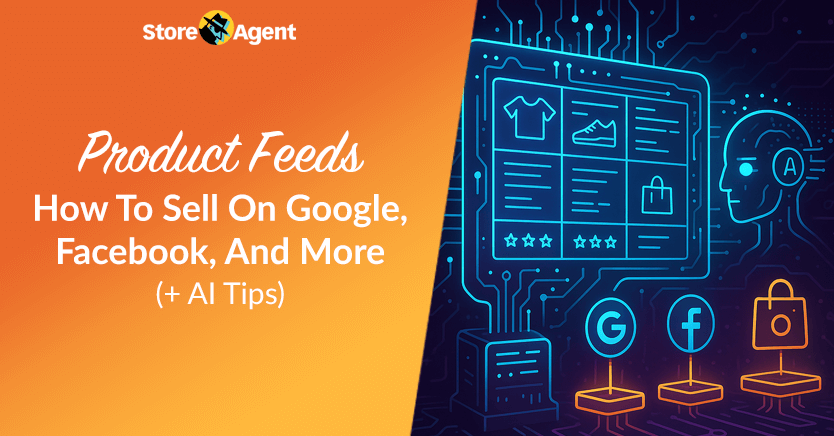
What are product feeds? They’re a powerful way to help WooCommerce stores get their products seen by more shoppers.
Think of product feeds as a shortcut for showing off what you sell on big shopping platforms. With them, you can send your listings to popular platforms like Google Shopping, Facebook, and more.
The result? Improved reach, better visibility, and a bigger chance to make sales.
In this guide, we’ll break down the basics of product feeds and how they help you sell across multiple channels. We’ll also show you how AI tools can make the process smoother and faster.
So let’s get cracking!
- I. What Is A Product Feed?
- II. Why Product Feeds Matter For WooCommerce Stores
- III. Where You Can Sell Using Product Feeds
- IV. How AI Tools Boost The Effectiveness Of Product Feeds
- V. Combining AI And Product Feeds For Better Results
- Conclusion
I. What Is A Product Feed?
A product feed is a file that contains your products’ key details, such as product names, prices, images, and stock levels.
When this file is sent to sales channels such as Google Shopping and Facebook, they use the product details to showcase your items to their users. In other words, your products show up not just on your store but also on other platforms.
This brings more eyes to your products, which means more clicks and potentially more sales.
Additional product feed facts
Here are a few more important details about product feeds:
- You need a product feed manager, a.k.a. product feed solution, to create product feeds.
- Product feeds come in different formats, including XML, CSV, TXT, and TSV.
- A single feed can contain any number of products, from a handful to thousands.
- Product feeds usually include many important details about your products, such as product IDs, titles, descriptions, prices, product page links, image links, stock availability, product categories, brands, and codes like GTIN or MPN.
- You need to meet a sales channel’s requirements for it to accept your feed and display your items.
- Product feeds can be sent to search engines, social media platforms, online marketplaces, comparison shopping engines, and retailer websites.
- Product feeds are also called product data feeds.
What a good product feed manager can do
With the right product data feed manager, you can:
- Add or customize product details to fit your unique needs.
- Customize listings to target specific regions and reach the right customers.
- Automate updates to product listings across multiple sales channels.
- Use templates and automation to easily meet channel requirements.
- Translate listings and switch currencies for a better shopping experience worldwide.
- Track campaign performance through integrations with analytics tools like Google Analytics.
📝 Take note: As a top-rated product feed solution for WooCommerce, AdTribes includes all the features mentioned above in one package.
See real examples of AdTribes at work here, here, and here!
II. Why Product Feeds Matter For WooCommerce Stores
If you run a WooCommerce store, using product feeds to sell across multiple channels is a smart move. After all, they offer many helpful benefits that make it easier to manage and grow your WooCommerce store
Here are the main ways product data feeds can help:
1. Easier multi-channel selling
As discussed above, product feeds allow you to connect your store to other sites. This can make a big difference to your business.
However, feeds also make this connection easier to manage. Instead of uploading products one by one to each sales channel, you can send listings to multiple platforms all at once. This saves time and frees you up to focus on other parts of your business.
2. Better visibility across channels
Because product data feeds help your items show up in more places, they increase the chances that more people will find them.
Think of it like putting up signs all over town instead of just outside your shop. The more places your products appear, the more likely someone will spot them.
In short, product feeds help you get in front of shoppers who might never visit your store on their own.
3. Improved traffic and sales
Once shoppers spot your products on other sites, many will click through to your store. Therefore, you get more visits without having to do extra work.
Of course, some of those clicks will turn into sales. So you’re not just getting seen, you’re growing your business.
4. Accurate and updated product info
Keeping your product data correct is important. When your product data feed updates, those changes automatically show up on other sites too. Thus, details like stock levels, prices, and images are always up to date.
Imagine someone saw one of your products on Instagram and bought it. This lowers your stock. Thanks to product data feeds, this update can show across all your connected sales channels, not just Instagram and your website.
Updated and accurate info prevents confusion and frustration. In other words, it gives customers a better shopping experience. This can make them more likely to buy and might even build loyalty to your brand.
5. Convenient bulk listing
Managing a large catalog manually can take forever. Thankfully, product feeds let you update prices, stock, and other details across many items in just a few steps.
If you’ve got hundreds of products, this makes your life much easier. Instead of editing each item, you update the feed and you’re done.
Basically, it’s a simple way to keep things organized and cut down on busy work.
6. Competitiveness boost
When your product listings stay fresh and appear on many sites, you have a better chance to keep up with other stores. Being visible where shoppers look helps you stay in the game. Consequently, this can make a real difference in how well your store does compared to others.
In short, product feeds aren’t just about getting seen. They also save time, reduce errors, and give your store more chances to grow.
III. Where You Can Sell Using Product Feeds
Product data feeds help you get your products in front of more shoppers by sending your listings to different places online. These places can be search engines, social media sites, marketplaces, retail websites, and comparison shopping engines.
Each one works a little differently but can enhance your store’s reach in its own way.
1. Search engines
Search engines are websites people use to find information online. Google and Bing are two well-known examples. Some search engines show product listings directly in search results, making it easier for shoppers to find your products without visiting other sites.
2. Social media platforms
People use social media platforms to connect and share content. Examples include Facebook, Instagram, and Pinterest. These platforms let you show your products alongside posts and ads, reaching people while they scroll or search.
3. Online marketplaces
Online marketplaces are sites where many sellers list products for customers to buy. Think of places like Fruugo, Wish, and bol.com. When your products appear here, shoppers can find them while browsing for items from many stores all in one place.
4. Comparison shopping engines
Comparison shopping sites help customers compare prices and features of products from different sellers. Examples are Google Shopping, Shopzilla, and PriceGrabber. When you list your products here, you make it easy for buyers to find your best deals side by side with others.
5. Retail websites
Retail websites are online stores that often sell products from different brands. Examples include Walmart.com and BestBuy.com. These sites attract lots of visitors who come to shop for a wide variety of products.
Using product feeds to sell on these channels can open many doors for your WooCommerce store. It’s like putting up signs in different parts of town where shoppers are already looking.
IV. How AI Tools Boost The Effectiveness Of Product Feeds
To further enhance your WooCommerce store’s growth, you’ll need more than product feed management alone. Based on what we’ve seen, writing good product descriptions, choosing the best product tags, and summarizing customer reviews are all important ecommerce responsibilities that take time and effort.
That’s where AI tools come in.
📝 Take note: With a solution like StoreAgent, you gain a collection of AI tools designed to take care of various tough, time-consuming tasks. This frees you up to scale your business.
With that in mind, let’s explore a few StoreAgent AI tools that can boost the effectiveness of your product data feeds.
1. Product Description AI
It can take a lot of time to write product descriptions yourself. If you have hundreds or thousands of products, this task can last weeks, if not months, unless you hire a team of writers to help.
Thankfully, Product Description AI can write detailed, SEO-friendly descriptions using just a few details. So, instead of trying to come up with the right words yourself, you can activate the tool and let it do the job.
About 87% of online consumers say product descriptions help them decide what to buy. Thus, it’s a good idea to use an AI tool that generates clear, compelling, and persuasive descriptions fast.
2. Product Summaries AI
Long product descriptions give shoppers all the details they need to make a buying decision. But a strong product summary grabs their attention first and makes them want to learn more.
Store Agent’s Product Summaries AI crafts summaries that highlight a product’s key details. Therefore, it helps ensure your products get noticed quickly and builds interest in those products.
Moreover, by giving shoppers the info they need fast, good summaries make people feel more sure about buying and trust your store more. This means fewer people abandon their carts and more people check out.
3. Review Summaries AI
Reading tons of product reviews can be a chore for shoppers. But what if you could make it easier for customers to discover common feedback?
The Review Summaries AI goes through all the reviews, finds recurring themes, and condenses them into a quick summary. This way, customers can quickly see the most important info about a product info, helping them decide if it’s right for them.
79% of consumers trust online reviews as much as advice from friends or family. Therefore, it’s important to show reviews in a way that’s easy to read and understand.
4. Product Tag Generator
When you use the right tags, you help people find your products more easily. Unfortunately, finding the ideal tags yourself doesn’t always lead to favorable results.
This is where the Product Tag Generator can make a difference. This tool automatically creates smart, useful tags that make products easier to discover and organize. Thus, customers can find what they need more quickly.
When shopping is simple, people are more likely to buy instead of giving up. This tool removes the guesswork from tagging, saves time, and helps your store do better.
V. Combining AI And Product Feeds For Better Results
It can be challenging and time-consuming to run a WooCommerce store. After all, products need the right details, good descriptions, and helpful tags to bring in customers.
Luckily, when you use AdTribes and StoreAgent in combination, you can simplify various processes. As a result, you cut down on manual tasks so you can concentrate on selling.
StoreAgent enhances your listings by writing attention-grabbing descriptions, adding smart tags, summarizing reviews, and more. Then, AdTribes takes this optimized content and sends it to your chosen sales channels, helping your products get noticed and bringing more customers to your store.
Here are the various ways these two tools work together to support your store:
1. Stronger data means better feeds
StoreAgent improves listings by creating AI-powered descriptions, smart tags, and more. Basically, this helps AdTribes send better product info to your sales channels.
2. More engaging listings, everywhere
By summarizing reviews and providing detailed product information, StoreAgent answers common customer questions, making listings more helpful. AdTribes then pushes these improved listings to all your sales channels.
3. Fewer mistakes in your listings
StoreAgent helps spot errors on your site, like missing or wrong info, before AdTribes sends it to other platforms.
4. Clear and consistent messaging
StoreAgent keeps your product descriptions and summaries clear and interesting. Then, AdTribes can share the same message everywhere your products appear.
5. Smarter marketing with less effort
StoreAgent suggests summaries and tags that help target the right shoppers. Then, AdTribes makes sure those messages reach them across different platforms.
With AdTribes and StoreAgent, you’re doing more than just running your store—you’re making it better. These tools work together to save time, boost product visibility, and help you sell more without extra work.
Eager to know more about AdTribes product feeds? Then check out our extensive guide:
What Is A Product Feed And How Do You Create One? (Ultimate Guide)
Conclusion
What is a product feed? It’s your ticket to getting your WooCommerce products seen across Google, Facebook, and other major platforms all from one place.
Using product data feeds makes multi-channel selling easier, faster, and way less stressful. And when you add AI tools like StoreAgent to the mix, your listings get even better with smart tags, great descriptions, and helpful summaries.
Together, AdTribes and StoreAgent help you work smarter, reach more shoppers, and grow your store with less effort.
To recap, this article explores the following major concepts:
- What are product feeds?
- Why product feeds matter for WooCommerce stores
- Where you can sell using product feeds
- How AI tools boost the effectiveness of product feeds
- Combining AI and product feeds for better results
Ready to save time and sell more? Explore AdTribes product feeds and StoreAgent to see how they can boost your WooCommerce business!
